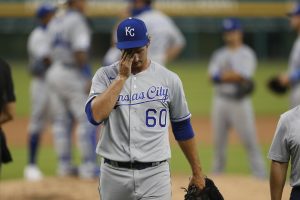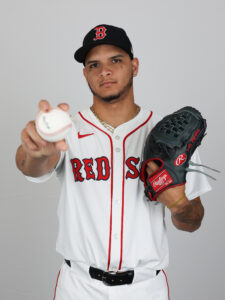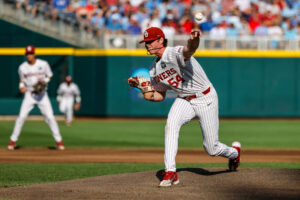December 16th: The Nationals are going to sign left-hander Foster Griffin, reports Robert Murray of FanSided. It’ll be a one-year, $5.5MM contract with another $1MM in incentives for the Excel Sports Management client. The Nats have 40-man vacancies and won’t need to make a corresponding move.
 Griffin, now 30, got some brief major league action a few years ago. He made seven appearances, split between the Royals and Blue Jays, over the 2020 and 2022 seasons. He has spent the past three years in Japan, pitching for the Yomiuri Giants of Nippon Professional Baseball, with great success.
Griffin, now 30, got some brief major league action a few years ago. He made seven appearances, split between the Royals and Blue Jays, over the 2020 and 2022 seasons. He has spent the past three years in Japan, pitching for the Yomiuri Giants of Nippon Professional Baseball, with great success.
He tossed 315 2/3 innings over those three campaigns, allowing 2.57 earned runs per nine. He struck out 25.1% of batters faced, only gave out walks to 5.1% of opponents and kept about half of balls in play on the ground. In 2025, a leg injury limited him to just 78 innings but it was his best season in terms of run prevention. He posted a 1.62 ERA with a 25.1% strikeout rate, 5.9% walk rate and 48.9% grounder rate.
Despite the solid numbers, there are some questions about whether how his stuff will translate to North American ball. Griffin’s fastball only sits in the low 90s, fairly soft by modern standards. He succeeds with a deep arsenal which also includes a slider, cutter, changeup, splitter, curveball and two-seamer.
It has been a relatively busy winter in terms of guys returning to North America after stints overseas. Cody Ponce got $30MM over three years from the Blue Jays. The White Sox gave Anthony Kay $12MM over two years. Drew Anderson got one year and $7MM from the Tigers and Ryan Weiss got one year and $2.6MM from the Astros. All pitchers have had some success in Japan or South Korea but the price differences are likely down to the stuff. Ponce is 6’6″ and 255 pounds with a fastball that averages in the upper 90s with a splitter/kick change that is considered a plus pitch. Griffin isn’t tiny, as he’s listed at 6’3″ and 225 lbs., but his crafty, soft-tossing lefty profile is obviously different than that of Ponce.
It’s still an intriguing package. Recent reporting indicated teams were showing interest in Griffin and that he was putting a priority on an opportunity to prove himself in a rotation. Washington is a good landing spot for him in that regard.
The Nats have been rebuilding for years but have struggled to return to contention. The slow progress prompted major changes, as the club has overhauled almost the entire front office and coaching staff in the past few months. It’s expected that the new regime, led by president of baseball operations Paul Toboni, will be focused on long-term goals. They are one of the clubs best suited to take a chance on an unproven arm like Griffin.
As of right now, the Washington rotation consists of guys like MacKenzie Gore, Cade Cavalli, Josiah Gray, Brad Lord, Griff McGarry, Jake Irvin, Mitchell Parker and others. Gore is just two years away from free agency and is widely expected to be traded this offseason. Cavalli and Gray haven’t pitched much in recent years due to Tommy John surgery. Lord had decent results as a swingman in 2025. McGarry is a Rule 5 pick with no major league experience yet. Irvin and Parker have each logged over 300 big league innings but they each posted an ERA near 6.00 this year.
In short, there’s very little locked into place in the Washington rotation, meaning Griffin should have a shot to hold down a spot. If he succeeds for the first few months of the season, he will likely end up on the trade block, allowing the Nats to potentially bring back more young talent for their rebuild. If it doesn’t work out, it’s a fairly modest bet from the team’s perspective, though it’s a huge amount of money for Griffin himself.
Photo courtesy of Darren Yamashita, Raj Mehta, Imagn Images
]]>
